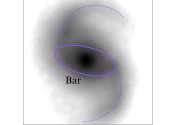Explosions of universe's first stars spewed powerful jets
Several hundred million years after the Big Bang, the very first stars flared into the universe as massively bright accumulations of hydrogen and helium gas. Within the cores of these first stars, extreme, thermonuclear reactions ...









